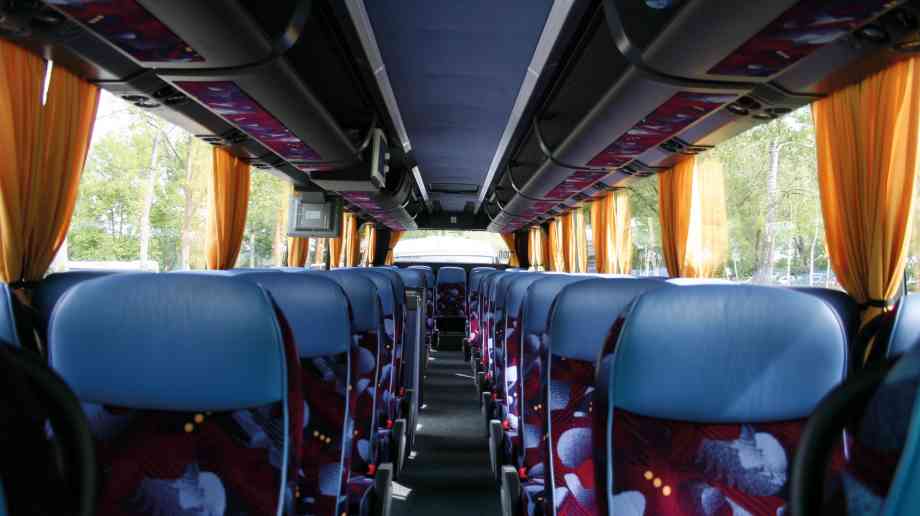
The importance of driver safety
A lot of consideration is given to pupil comfort and health and safety on school trips – but how much consideration is given to the driver employed to get them from A to B? Pat Harris, director of BUSK, looks at the current problems drivers face.
With up to ten million days of activity outside of the classroom each year, it might come as a shock to learn that the risk of getting pupils to the activity is greater than the actual activity itself. So how seriously do hirers of transport such as schools and child associated groups, take the matter of choosing a company to use to drive children in their care? If schools and groups have taken all reasonable steps to ensure the transport company they contract has a good safety record and has not attracted attention from the Traffic Commissioner for all the wrong reasons, then if something were to go wrong, they will be able to show they have taken all necessary preparations prior to departure.
At BUSK’s transport safety conference last month Mike Imperato, a partner at Watkins and Gunn solicitors, talked to delegates about who is responsible and outlined that a governing body is responsible for the negligence of any teacher which arises in the course of their employment and is under a duty of care to determine policies to ensure schools deliver the requirements of the national curriculum. The governors should state which school visits needs their consent, for example overnight stays and trips abroad, and they should provide guidelines for procedures on school visits. For private or independent schools where it is likely that there would be a small controlling management team, then this team would be obliged in law to undertake the same checks as a state school’s governing body.
Driving safety standards
Mike outlined that preparation and planning are key to a successful and safe school visit and depended to a large extent on the leader’s ability to carry out a suitable and sufficient assessment, identify all the hazards and risks and make arrangements to manage associated risks successfully. He said that many organisations, such as BUSK and local authorities, offered online planning and approval tools but simply downloading a risk assessment from a website is not sufficient to ensure the safety of any visit.
What about travel arrangements and the risk assessment for drivers? What about planned food and rest stops and checking whether drivers are competent to drive minibuses? Mike explained that with coach hire, obtaining three quotes and choosing the cheapest is definitely not demonstrating the correct culture and attitude to the safety of pupils in a school’s care. The law requires a school to provide a ‘safe journey’.
An adequate written risk assessment that clearly identifies any risks to the passengers and shows how potential risks will be reduced is crucial. Schools in the audience heard how risk assessments did not have to be onerous and once completed should be re-visited once a year to re-assess standards. For example: whose responsibility is it to ensure safety belts are suitable for the age group of child? If there was a road traffic collision and a child was killed or injured because they were not using a safety belt then who is responsible? What seat belt policy does the school have in place and how is it enforced? These issues need to be written into a transport policy document so the school can show that it has thought about the matter and taken appropriate action to safeguard all passengers.
Strapping students in safely
There are examples of good practice in relation to training pupils in the importance of wearing seat belts. In 2008/2009 the Welsh Government made a grant available so local authorities could apply for funding for projects to bring innovations and improvements to school transport. These examples include projects by the Vale of Glamorgan Council and Monmouthshire County Council that provided in-class seat belt safety training to pupils using DVDs and role pay to reinforce important messages.
Seat belts are just one example of a simple safety measure, but do those responsible for checking know what they are doing? Have they got the right belts for the age and size of child? Do schools have the understanding required to ensure children in their care are not seriously injured by a safety belt because they used the wrong one? What would parents say if they knew their child was exposed to danger if staff did not know what sort of belt to use? Parents would simply not allow their child to get on the coach if they thought the school was not fully aware of what it was doing.
Most parents trust schools to know, but do schools really understand about seat belt legislation and the duty of care surrounding the use of safety belts or do they just think that any belt will do? BUSK hears from some schools that say they are complying with minimum seat belt laws, however, they appear to rely upon this over and above the duty of care they have to ensure that the belts they use will adequately protect children and not injure them.
Travelling abroad
Of course there are a number of things most parents just take for granted when it comes to allowing a school to take their children on a school trip. Take visits abroad. Up to 30 per cent of coach crashes are linked to driver fatigue according to a European Commission report. The findings identify that most of these crashes happen on overnight drives or at the end of a drivers’ shift.
Schools are legally obligated to risk assess coach travel and if the driver/s are fit to drive. BUSK can reveal from its own research that this just does not happen. It has found that many schools book a visit abroad using a tour company and this would make sense because the tour operator will arrange everything from transport to ferry crossing, accommodation and even some of the activities. A tour company will offer a quote but sometimes offer a lower rate to win the booking without making the school aware that it can only offer a lower rate because they will force drivers to share a room or give the drivers some of the worst rooms in the hotel as they are not seen as paying guests.
Tired and tested
BUSK’s Nightcap campaign has raised awareness that this practice leaves them tired. Sharing rooms with a co-driver that snores for example, disturbs their sleep. In particular, the last day of a foreign trip can be one of the worst with drivers reporting that often they can be checked out of their room after breakfast. The party go off on another day of activities leaving the drivers to hang around all day without any facility to rest or sleep when, legally, they are meant to have a day bed.
When the party return and get loaded up to depart, it can be around 21:00. The drivers will have had disturbed sleep all week, will have been awake all day form early morning, will now have to share a 21‑hour long haul drive back to the UK. Drivers have expressed their concern that they are struggling to stay alert and awake on these overnight drives. At some activity sites drivers are expected to sleep in tents and share shower blocks with pupils. This can only compromise their position and breach safeguarding requirements, yet it is happening on a regular basis.
Only last year a British coach driver was found guilty of involuntary manslaughter when he admitted that he may have dozed off behind the wheel. Angry parents blamed him for the very serious injuries sustained by their children but had their children been wearing their safety belts, their injuries would have been very much reduced, as were the injuries of those children who did belt up. Again, it comes back to that school’s seat belt policy… did they have one and if so, why was it not enforced? Perhaps those parents were not asking the right questions about why their children were so badly injured.
Making schools aware
As for schools, a little bit of research would help them to better understand the plight of the drivers affected from not having enough sleep and what action they can take. One local authority provided a statement for the BUSK conference as they were not able to attend. Their statement read: “Monmouthshire County Council supports the BUSK Nightcap campaign and has endorsed this by changing its trips and visits risk assessment document to include the assessment of drivers accommodation by the tour operator to make sure that the drivers do not have inferior standard of accommodation.
“Monmouthshire Local Education Authority department also recognise the importance of this and make sure that the schools are aware of this element of the risk assessment when booking trips abroad.”
Schools attending the conference listened as Mike Imperato said there was a particular issue on foreign trips. If things went wrong he said the school would always be a key source of evidence – it’s safety culture, governors’ lead policy, head and senior staff responsibilities for day‑to‑day activities. He drew attention to documents – not just obvious documents, such as an accident report or risk assessment, but also policy documents, correspondence, minutes of meetings, emails and training records. He also warned schools to be aware of the ‘email chain’, Facebook/Twitter accounts, texts, mobile records, witnesses and mobile phone photos. All of these things will be looked at if something goes wrong.
He finished by explaining that a culture of safety means that with responsibility comes accountability. Ignorance was no excuse. Schools and groups need to apply best practice and need to be able to demonstrate a culture of safety. He asked: “Have you applied your mind, reviewed matters, kept up to date and not merely ticked boxes?” If not, why not?
Further Information
www.busk-uk.co.uk
Latest News
12/12/2025 - 11:39
The government has announced at least £3 billion to create tens of thousands of new speci
12/12/2025 - 07:07
The findings suggest that children and young people attending schools in the North of England are less likely to take part in and benefit from residential visits.
11/12/2025 - 13:52
Ofqual has launched a 12-week public consultation on its proposed approach to regulating on-screen exams in GCSEs, AS and A levels.
11/12/2025 - 09:49
A report by Ofsted and the Care Quality Commission (CQC) finds that support for children with special educational needs and/or disabilities (SEND) who do not attend school full-time is too inconsistent.
11/12/2025 - 09:37
The easy-to-use web-based tool is designed to help schools estimate how an air filter unit could impact air quality and energy consumption in a classroom.







